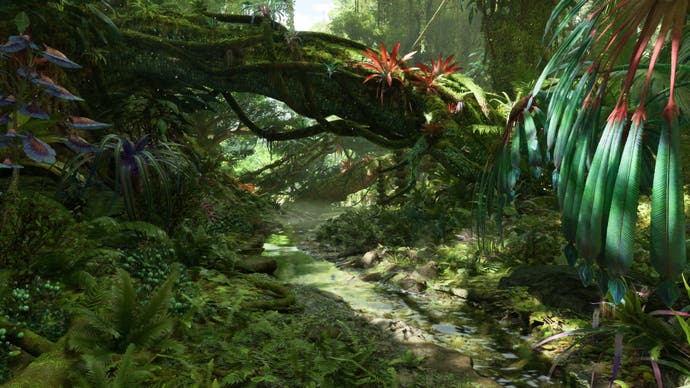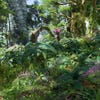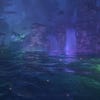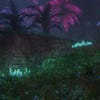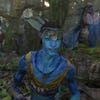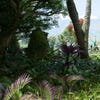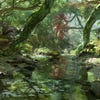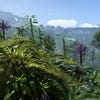Avatar: Frontiers of Pandora is one of the most technologically impressive games of the year
Ubisoft Massive's next-gen Snowdrop engine enhancements are simply phenomenal.
What a year it's been for real-time 3D graphics! With Avatar: Frontiers of Pandora, we're looking at one of the most visually accomplished releases of 2023, seemingly released without much fanfare. However, when you look at the creators behind the franchise and the game, perhaps we should have expected something special. It's hard to deny the attention to detail that James Cameron has as a creator, not to mention Avatar's reputation for pushing the limits of movie CG. But how do you compress down the blockbuster experience when rendering on a home console? That is where Ubisoft Massive comes in with its superb Snowdrop engine. The tech delivered sensational results on prior titles primarily designed for last-gen hardware, but with a new baseline in technology defined by PC and the latest consoles, Massive has delivered an Avatar game worthy of the name.
Today we're talking about the high-end PC experience, but I should stress that the game is eminently scalable. It runs with both performance and quality modes on Xbox Series X and PlayStation 5, and it still looks phenomenal when its targeting 60 frames per second. Even Xbox Series S looks great, albeit limited to a single 30fps mode. So, while we're talking about the ultra experience, right now we're fairly confident in recommending Frontiers of Pandora on all consoles too.
The basic challenge facing the game is to effectively capture the world of Pandora within a game - and it has to do so with the same super-saturated hyper-reality that the films are known for. To do this, Massive has built this world upon a new lighting engine for Snowdrop. In the past, Snowdrop and a number of other Ubisoft titles pioneered a form of real-time global illumination for games called pre-computed radiance transfer. It is the reason why Far Cry 3 looks the way it does and it is the key tech that enables the large scale open world lighting with full time of day in titles like The Division. There are many compromises, of course and it can't escape that kind of 'videogamey' look with glowy bits in shadows and a lot of objects badly placed in any given scene, looking as though they're floating. This is last-gen stuff, and not a good fit for the ambition of Avatar: Frontiers of Pandora.
As a result, Massive has upgraded Snowdrop to fully support a global illumination system based on hardware-accelerated ray tracing - and the results are quite a sight to behold. RTGI is most striking in areas that are heavily occluded, like the mouths of caves, for example. Sunlight floods in through the entrance, bouncing around but losing intensity the further into the cave you look. Similarly, the greenish tinge brought about by light bouncing off the foliage and vegetation is another hallmark of RTGI. Thanks to ray traced global illumination, corners and crevices in Avatar get suitably dark and objects seldom look like they are floating above the surface they're resting on - and this makes any area of the game look much more tangible than it would were it using a non-RT technique.
This is especially evident in all the areas of lush jungle where the canopy above blocks out a lot of the sun and sky light - you can see that encroaching darkness from the foliage around you but importantly, it is not just pitch black: the colour from all the leaves, trees and more is bouncing around the scene, lighting it up with a localised green bounce. Walking around the jungle in this game gave me the rare feeling I got from Crysis in 2007, where the combination of plant density and movement mixed seamlessly with the lighting and dappled shadows from above communicate the sense that you are in the wilderness, where wood creaks under your feet and exotic plant life surrounds you. It is seriously well done, and I think many people will immediately appreciate that when they first step out into the jungle from the high-tech sci-fi interiors where the game begins.
Lighting is the key foundation on which this world is built, but what about the world itself? Frontiers of Pandora excels here too and you notice it right away on the micro scale when you step out into the jungle. Plants, terrain, and all the little scattered details in the outdoor sections have an individual quality that holds up to very close scrutiny, rewarding your attention with really high surface and texture detail. Shadow detail looks good on many objects as hardware ray tracing is leveraged to give hard contact shadows to objects of a larger scale, which are then blended in with shadow maps. When the lighting combines with the shadows, any object in the game looks great when you get up close. And throughout the game, you're often surprised just by how much new granular detail you find in some random corner of the game world.
Thankfully, that micro detail does not mean the game skimps on the larger scale rendering. At a distance, the game fills out all the detail far into the distance, almost always teeming with plant and animal life. The views of the landscapes always impress and at normal walking speed, the density of the foliage and ground detail is unprecedented for current-gen games. On PC at least, the level of detail popping on average is not a concern and only when you get access to your flying mount does the pop-in start to become more visible, but given the speed you fly and the vista distance, the effect is understandable.
When flying, you get to appreciate other upgrades to Snowdrop. Unlike Halo Infinite, for example, large-scale shadow distance is present when needed. This is done with really far distance hardware ray tracing for the large elements like floating islands and rock formations, while terrain shadows are achieved with ray marching. The scale in the sky is wonderful, underscored by great volumetric rendering - which is now unified in Snowdrop. So elements like clouds, cloud shadows and valley fog are all handled as part of one hierarchical system of shading and shadowing.
Fidelity is high in Avatar: Frontiers of Pandora but in addition to that, the world is reactive and interactive. You can see that in the plant life, which can serve gameplay purposes like giving you speed boosts, breaking your falls, or acting as booster pads to propel you up high. Some plants can harm you while reacting to your presence, showing unique animations and behaviours depending upon the plant type. Physically, nearly every plant in the world moves and bends as it is touched by you, the wind, or non-player characters.
Avatar: Frontiers of Pandora is a feast for the senses and Massive should be very proud of the results. I did have some critiques on scalability, only for the development team to reveal the existence of an 'unobtanium' preset aimed at pushing fidelity even higher for the PC hardware of tomorrow - new settings opened up by adding a launch parameter. Amusingly, this means that a video based on b-roll of the game running on ultra isn't actually the best possible experience we hoped it would be as we produced the video. Remarkably, it gets even better.
Right now, my only remaining critiques concern BVH quality - the geometry used for RT. Even on unobtanium settings (which causes an RTX 4090 to buckle beneath 60fps in 4K DLSS quality mode), the BVH structure is simplified, compromising reflection quality to a certain extent. I'd really like to see a higher quality setting made available. Also, transparencies do not have ray-traced reflections. Instead, standard cubemaps are used and look jarring in an otherwise incredible presentation. Once again, a higher setting covering transparency reflections would be an excellent addition in order to perfect this game's presentation.
Beyond that, the unobtanium settings solved almost all of the minor issues I had and future-proof the game to a remarkable degree. I am genuinely in awe at how stunning this game looks and love the dedication the developers have to its visual fidelity - and I highly recommend Avatar: Frontiers of Pandora not just for its graphical accomplishment, but for its gameplay too. While there are some Ubisoft-like mechanisms I think the game could do without, I was reminded of the original Crysis on more than one occasion. But we're not done yet with Digital Foundry's Avatar coverage! We'll report back on the console versions soon, plus we're working on optimised and console-equivalent settings for PC owners.
